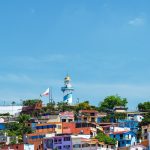
Liberation Day in Yemen
Liberation Day is observed on October 14th each year in the Republic of Yemen. This holiday commemorates the beginning of the Radfan Uprising that began in 1963 against British rule. This event unified the Yemenis against a common adversary and allowed them to start the Independent People’s Republic of South Yemen.
Although the Yemeni Civil War has been raging since 2014, some people manage to take the time to observe this holiday when it rolls around every year. Perhaps because it harkens back to a time when Yemenis all across the country came together against the British Empire.
The History of Yemeni Liberation Day
Since the beginning of the 20th century, the Aden Protectorate has been the administrative seat for the British in South Yemen. This was done to ensure that Great Britain had control of the Suez Canal, a key strategic position for them, as well as for the rest of the West.
Although Great Britain had previously signaled to the locals that they were going to grant independence, this failed to come about. As a result, two groups emerged that demanded independence. These groups were the Front for the Liberation of Occupied South Yemen (FLOSY) and the National Liberation Front (NLF).
On October 14th, 1963, these two groups began the struggle for independence by attacking a group of British officials at Aden Airport. This would ignite the Radfan Uprising—an uprising that was marked by guerrilla attacks by the NLF and FLOSY. The British were unable to put down these riots and revolts, so they ended up leaving Aden. On November 30th, 1973, the Independent People’s Republic of South Yemen was established.
Key Facts About Yemen
Let’s go over a few key facts about Yemen before we continue with our discussion of Yemeni Liberation Day. The following facts are ones that we think everyone should know about this country, its history, and its struggles.
- Yemen was originally called Arabia Felix by Roman geographers. These two words, when placed together, mean “Fertile Arabia.”
- The capital city of Yemen, Sanaa, is the oldest continuously inhabited city in the world.
- According to many historians, the Kingdom of Sheba was in modern-day Yemen.
Observing Yemeni Liberation Day
Since this is a public holiday, many businesses, government offices, and schools are closed for the day. There are also a variety of events that occur across Yemen, including political speeches, festivals, and other such events.
It’s also a day for families and communities to come together and show unity. On social media, the hashtag #YemeniLiberationDay can be used to spread the word about this holiday.








